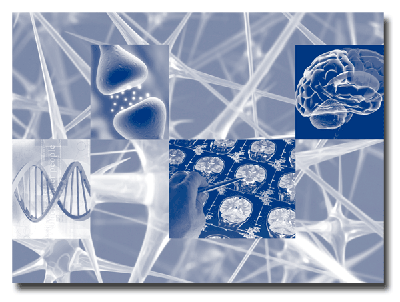
A brief guide for the perplexed.
A neurotransmitter is a chemical substance that carries impulses from one nerve cell to another. Neurotransmitters are manufactured by the body and are released from storage sacs in the nerve cells. A tiny junction, called the synaptic gap, lies between brain cells. (Think of Michelangelo’s Sistine Chapel, with the finger of Adam and the finger of God not quite touching, yet conveying energy and information.)
Neurotransmitters squirt across the synaptic gap, and this shower of chemical messengers lands on a field of tiny bumps attached to the surface of the nerve cell on the other side of the synaptic gap. These bumps are receptors, and they have distinctive shapes. Picture these receptors, brain researcher Candace Pert has suggested, as a field of lily pads floating on the outer oily surface of the cell.
Neurotransmitter molecules bind themselves tightly to these receptors. The fact that certain drugs of abuse also lock tightly into existing receptors, and send messages to nerve cells in the brain, is the key to the mystery of addiction.
The fact that certain drugs essentially “fool” receptors into receiving them is one of the most important and far-reaching discoveries in the history of modern science. It is the reason why even minute amounts of certain drugs can have such powerful effects on the human nervous system. The lock-and-key arrangement of neurotransmitters and their receptors is the fundamental architecture of action in the brain. Glandular cells are studded with receptors, and many of the hormones have their own receptors as well. If the drug fits the receptor and elicits a response, it is called an agonist. If it simply blocks the receptor site without stimulating a response, it is an antagonist. Still other neurotransmitters have only a secondary effect, causing the target cell to release other kinds of neurotransmitters and hormones.
Two of the most important neurotransmitters are serotonin and dopamine. The unfolding story of addiction science, at bottom, is the story of what has been learned about the nature and function of such chemicals, and the many and varied ways they effect the pleasure and reward centers in our brains.
In 1948, three researchers—Maurice Rapport, Arda Green, and Irvine Page—were looking for a better blood pressure medication. Instead, they managed to isolate a naturally occurring compound in beef blood called serotonin (pronounced sarah-tóne-in), and known chemically as 5-hydroxytryptamine, or simply 5-HT. The researchers determined that serotonin was involved in vasoconstriction, or narrowing of the blood vessels, and in that respect resembled another important chemical messenger in the brain—epinephrine, better known as adrenaline.
Even though there is at most 10 milligrams of the substance in our bodies, serotonin turned out to be one of nature’s signature chemicals—a chemical of thought, movement and behavior, as well as digestion, ejaculation, and evacuation. The body’s all-purpose neurotransmitter, involved in sleep, mood, appetite, among dozens of other functions. The cortex, the limbic system, the brain stem, the gut, the genitals, the bowels: serotonin is a key chemical messenger in all of it.
Another key neurotransmitter—dopamine—is considered to be one of the brain’s primary “pleasure chemicals,” and is found in areas of the brain linked to experiences of joy and reward.
Dopamine pathways play a role in carrying signals related to attention, movement, problem solving, pleasure, and the anticipation of rewarding experiences. Dopamine is one of the reasons why, after you have a pleasurable experience with food, drink, sex, or certain drugs, you are likely to feel a desire to repeat the experience. Dopamine is implicated in not just the drug high, but in the craving that accompanies withdrawal as well.
Feelings of pleasure, or joy, are natural drug highs. The fact that they are produced by chemical alterations in brain state does not make the fear or the pleasure feel any less real.
Excerpted from The Chemical Carousel: What Science Tells Us About Beating Addiction by Dirk Hanson © 2008
Photo Credit: NIDA
No comments:
Post a Comment